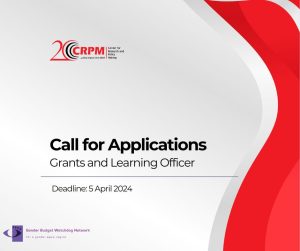30.04.2009
by NIkola Stalevski
Bill Clinton ran one of the most remembered and controversial campaigns to win his second term in 1996. Alarmingly throughout 1995, public opinion polls showed that his popularity was in free fall, threatening his reelection. The drastic response was to call in Dick Morris, under whose guidance a bizarre mix developed – a leftist candidate who publicly promoted classic conservative policies, the so-called “third way”. The background for this perverse marriage was the following. Detailed demographic research of voters and regular polling clearly determined the characteristic of the undecided voters and their favorite policies, what they wanted to hear. This information guided all policy-making and public statements of the last year of Clinton’s first term. Before proposing a specific policy, the administration used surveying to gauge its impact on these voters. Directly (though extensive analyses, surveys, focus group and groundwork), the policy-making of the office of the President of the Unite States and an entire election campaign was geared towards appeasing the hopes and worries of a key undecided part of the electorate. In the end Clinton won.
Even though it proved successful, these tactics were also criticized as a shameless manipulation of the electorate, especial when Tony Blair and his so-called “spin doctors” applied them in England. Nevertheless, it serves to illustrate a key point. The most important election campaign on the planet is firmly grounded in a scientific process of gathering formation, researching, analyzing, taking appropriate actions, measuring the effects and applying consequent adaptations. In the same way that there are exorbitant amounts of money spent on advertising, billboards, brochures, call centers, canvassing etc.; also large sums are dispensed on focus groups, surveys, analyses and conducting desk research. It is natural to assume that such a machinery conducing a year-long campaign cannot be compared with our official 20 days of plastering the cities with posters. However, one should always have this scientific approach to campaigning in mind when looking at our own electoral efforts.
And what distinguishes our campaigns? Time, money and above all key capacities are lacking; therefore, it is impossible to apply a sound methodological approach. The answer is reruns and improvisations. Usually all parties base their activities on the already well known rallies and canvassing, public space promotions etc. The bulk of the money is spent on political advertizing, billboards and distributing fliers to people’s homes. In the end, there is no noticeable change, the desired effect on the public’s opinion is lacking. During the course of the campaign the ratings of all the candidates, in all the polls, consistently drop, while the number of undecided voters consistently rises. Generally speaking, the volume of distributed advertising tools does have an effect. The billboards of the governing parties VMRO and DUI are clearly dominating the landscape with a 3 to 1 margin compared to any other rival party. In the application of other tools, internet based platforms for example, a rather limited approach is apparent. The internet sites of the candidates have very limited content and a lot of dead/empty links. Sadly they are only in the mother tongue of the majority of the party’s membership; the links in the other languages are either completely empty or rudimentary. And? Does it make a difference? The presidential candidate Ljubomir Frckoski had the most professional site with best content; however his rating did moved from the 12% average during the entire month. No effects.
Also the message to the electorate is too general. Nearly all presidential candidates exalted the importance of NATO and EU integration; they talked about the effects of the economic crisis, about investments and job creation, about removing the visa barrier. The campaigning has been by in large positive; almost all candidates presented themselves as “a man of the people” “unifying candidate”. In the Frckovski – Ivanov link there is some negative campaigning “i.e. too vulgar to be president”; however, there is no noticeable intense attack or mobilizing rhetoric. The lasting impression of the presidential campaigning is one of bland recycling.
Some interesting changes, especially in the parties with predominantly Albanian electorate, were not duly reported and were not given enough space in the media. For example, DPA put forward a female candidate, a first in Macedonian politics. Unfortunately, she mostly rehashed the leader’s nationalist agenda, but still a woman running for president. Imer Selmani was the first ethnic Albanian politician who publicly promoted the civic concept and was not narrowly focused on lobbying for more collective/ethnic rights. He even publicly proclaimed this in his speeches in front of predominantly Albanian audience. He is the first politician in Macedonia to actively campaign on the entire territory of the country. He was one of the most serious contenders to enter the head to head race for the presidency, and it was only due to the low turnout in the Albanian electorate that he came in third. Is this a good sign that perhaps there is some room for a viable the civic political option in Macedonia?
Nevertheless, in the end it seems that the most important element has remained unchanged – strong party discipline on election day. All of the accompanying agitations, employment incentives & threats serve to assure that on that day thousands of people vote in fear and obedience. For such campaigns there is no need to have sophisticated research, focus groups and surveys. There is no need to select key target groups and to develop policies which reflect their concerns. The only thing which is needed is a strong hand and a good party machine. This is not a Macedonian invention, and was an integral part of US politics for a very long time. One of the most famous examples was the democratic machinery of Richard Daley. During his term in Chicago, from 1955 to 1976, the party directly controlled 35,000 jobs in public sector. Also, there were the countless tenders and other contracts for “friendly” companies, valued in the millions. This system successfully functioned for well over a century, manipulating with the votes of vulnerable groups (such as immigrants, African Americans and other minorities). However, after Dailey’s reign new regulation was enacted new punitive measures put in place and the system was dismantled. Does Macedonia have to go through this century long evolution of political torture and manipulation before the institutions of the state and the consciousness of its citizens is ripe and ready for a functional democracy, one where individuals vote independently and freely? This story is still being written.





